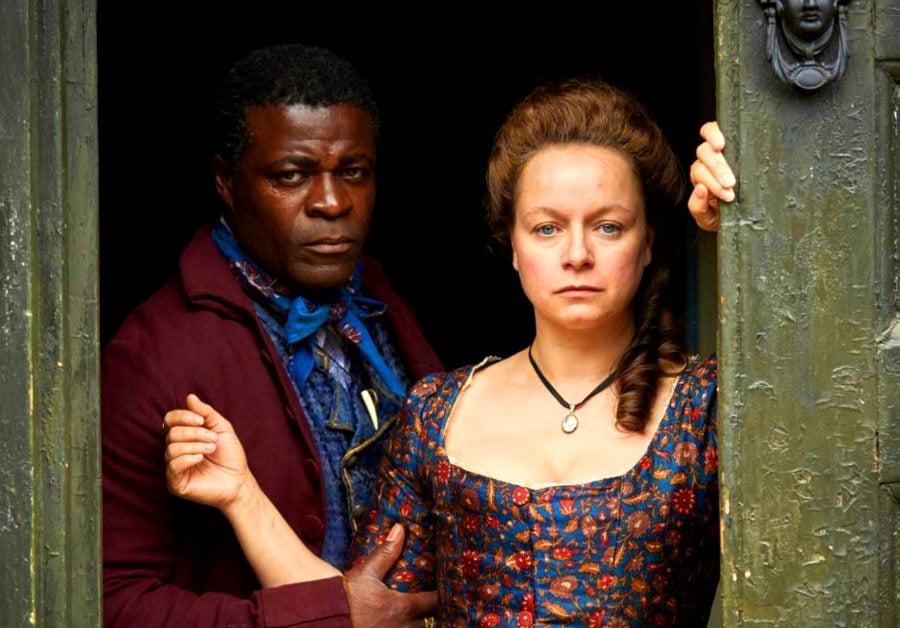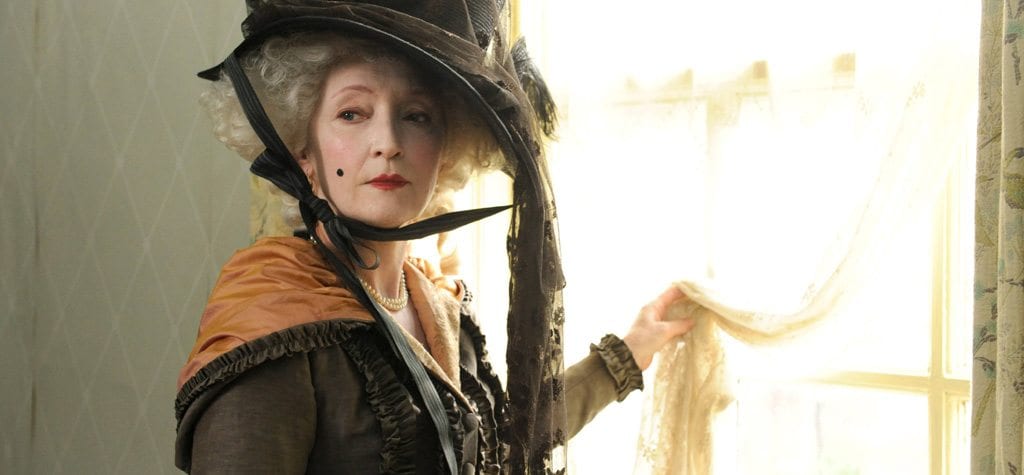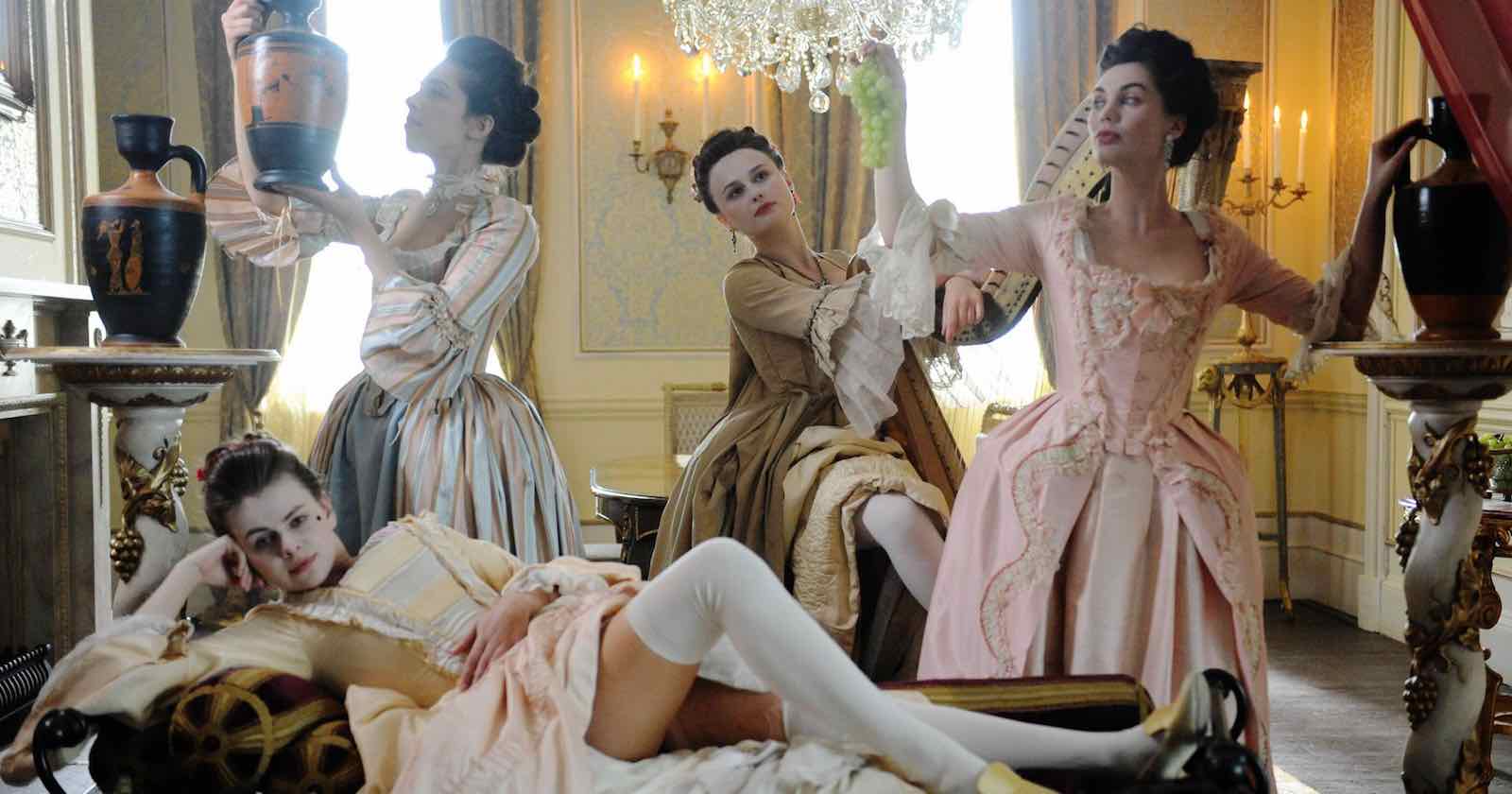
‘Harlots’ and its cast proves the future of TV is female
In 2017, ITV & Hulu hopped in bed together to produce the bawdy period drama Harlots. Period drama fans can’t help but draw parallels between Harlots and a previous ITV show, Band of Gold. Both shows were written by women and produced by a female-heavy team; both shows tell the sometimes hard-to-swallow stories of prostitution; and both shows feature Samantha Morton in a lead role.
That’s where the parallels end, swapping the muted tones of the gritty streets of Bradford in Band of Gold for the cobbled lanes of 18th-century London shot in glorious color in Harlots.
It’s fitting that after such a storied career Samantha Morton worked with ITV again, exploring similar themes to her breakout role. Coming full circle, Morton’s character in Harlots is brothel-owner Margaret Wells, whose lot in life is to protect her charges – rather than the Tracy Richards of Band of Gold who desperately needed to be protected.

The first episode of Harlots season 1 jumps straight into the action, depicting an escalating turf war between Margaret Wells (Samantha Morton), owner of a bawdy Covent Garden house of ill repute, and her archnemesis and former employer, the wholly more put-together Lydia Quigley (Lesley Manville, a veteran fully in her element), whose own Soho bordello is frequented by the rich and famous.
What’s interesting about Harlots is the universal appeal of the subject matter. The show is based loosely on Harris’s List of Covent-Garden Ladies, essentially the 18th-century equivalent of a burn blog, written by a john who had a lot of time (and money) on his hands.
The virginity auction is one of the most distasteful and talked-about plot points for modern audiences, but truth proves stranger than fiction. News broke mere days after Harlots’s 2017 premiere that an 18-year-old Romanian woman auctioned her own virginity for over $2.5 million.

Throughout Harlots, we see the action through what executive producer Alison Owen calls the “whore’s eye view”. Game of Thrones it ain’t – the sex in Harlots is less to titillate and more to punctuate the politics involved in the trade of sex.
In addition, each copulation scene oozes with comedic charm. We see these girls in a job just like any other, the sex coming across as an annoying drop-in from a pesky client rather than something to arouse the audience.
To keep you on your toes, Harlots makes some modern choices for the show’s underscore & soundtrack. Some critics have negatively responded to these choices, calling them intrusive & jarring. Though, this argument can be quickly rebutted considering how pieces from the 1760s struggle to provide the emotional momentum to modern audiences that the intense rock & electronic jams in Harlots do. This acoustic intensity is especially necessary as Harlots pairs the sound with violent imagery.

(However, the source music, such as the castrato art songs performed in a theater scene, are most certainly historically accurate.)
The trend of implementing anachronistic music is spearheaded most noticeably by Sofia Coppola in Marie Antoinette and, when handled with taste & foresight as in Harlots, can be immensely effective. Other movies & shows such as Baz Luhrmann’s The Great Gatsby and Alena Smith’s Dickinson have also successfully imbued their historical productions with a contemporary soundtrack.

Though Hulu cancelled Harlots after three seasons, we we can always hope that the BBC, who acquired the rights to broadcast the series in 2020, will pick up the series again to continue the story. Nevertheless, Harlots is worth the watch and the rewatch if you like period dramas shown through a woman’s lens.
Harlots provides a unique social commentary sprinkled with a dash of high camp bound to keep you entertained. After all, there’s more than one tart with a heart to be found in Harlots.



